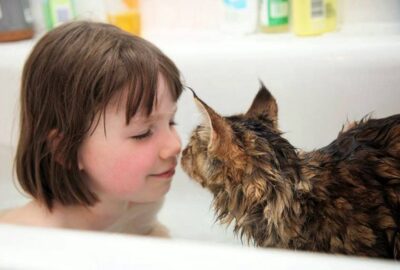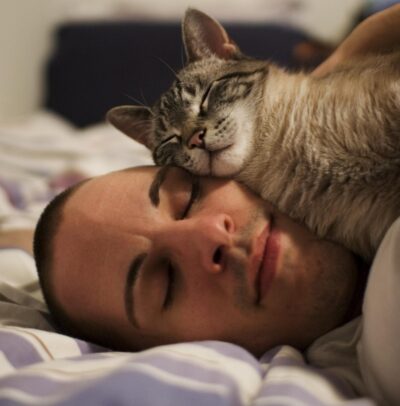Do you think your cat would make a good therapy cat? You may have seen dogs in various therapeutic roles, but cats can also serve as exceptional companions in therapeutic settings. A cat who receives training as a therapy cat does the important duties of providing comfort and support.

The therapy cat receives training geared to offering comfort and affection to individuals in hospitals, retirement homes, schools, prisons, or other facilities where emotional support becomes beneficial.
What are the benefits offered to those receiving the services of the therapy cat? A few of these include better heart health, reduced stress and pain, helping build a stronger immune system, and decreasing signs of anxiety, depression, or other mood and behavior additions.
The cat helps promote lessened feelings of loneliness and can heighten the ability to form social connections. The animal can cause people to laugh more, thus producing good brain chemicals, such as dopamine, endorphins, oxytocin, or serotonin.
Helpful In Reducing Emotional Stress

A therapy cat can significantly ease emotional distress and promote a positive environment. Consider the potential effect of kitty’s calming purr. Imagine the soft fur that the stressed person can pet, offering a unique sense of comfort. Studies show that animal-assisted therapy can decrease anxiety, lower blood pressure, and stimulate social interaction among people.
Watch a child as he or she stroke the cat’s fur. Such interaction puts a smile on a little one’s face. Listen to older folks who reminisce about pets from their past, while interacting with a therapy cat. These are powerful moments that demonstrate the profound effect that an animal can have on a human’s feelings of well-being.
Where Can You Take Your Therapy Cat?
You must arrange ahead of time if you wish to take your cat somewhere where you feel the training can prove beneficial. It is important that you schedule visits in advance when you wish to offer your kitty’s services. Check with the facilitator to arrange your visit.
What Requirements Must Kitty Meet?
Not every cat becomes a good candidate for this important work. What do you need to do to assess your cat’s eligibility? First, evaluate your cat’s temperament, including such factors as sociability, obedience, and calmness.
A therapy cat cannot have any tendencies for showing aggression toward people or animals, and if nervous or shy, will not become the ideal candidate.

Special rules apply to therapy animals. For example, the cat cannot eat a raw diet due to the risk of passing on some food-borne illness. It goes without saying that all vaccinations must be up-to-date.
Is your cat comfortable with change and with new situations? Has the cat learned to walk with a harness or a leash? Be prepared for your cat to be subjected to various tests to evaluate how kitty will behave in certain settings.
How does the cat react to unusual and scary situations? Is it upsetting for kitty to be around hospital equipment, strange people, and new sounds and scents, or do these produce anxiety?
Training and Certification Process
Look for an organization that can issue a therapy animal certificate. Expect that the valid organizations require that you fill our a questionnaire to determine if your cat is a suitable candidate. The process will differ for each organization.

Talk to multiple organizations to find one you feel is most suitable for your cat. Then, be prepared for multiple types of tests to evaluate the cat’s temperament and the reaction to unusual and scary situations.
Cat therapy training involves socialization and basic obedience. Such training might include exposing your cat to different people, environments, and situations to ensure they remain calm and comfortable in various settings. Some organizations might provide specific training guidelines for your cat to follow.
Purpose Of Certification
Once training is completed, realize that certification is not just a formality. It’s a testament to your cat’s ability to provide safe and effective therapy services. To reach this certification, your cat must pass an evaluation conducted by a recognized therapy animal organization. Such an evaluation typically includes a test of your cat’s behavior and temperament in various scenarios that they might encounter.
Once certification becomes achieved, this credential carries a great deal of importance. It provides assurance to facilities who might use your cat’s services that the animal is a dependable contributor to therapeutic programs.
You as the owner and handler must also become aware of any legal and regulatory aspects of working with a therapy cat. These include understanding where your cat is allowed to go, your own responsibilities as the handler, and making sure your cat’s health is good and vaccinations are all current.
The Life of a Therapy Cat
Your therapy cat has a life of purpose and connection. This special kitty’s existence revolves around providing comfort to those in need. Your cat enables the healing of others, and as this process goes forward, your own bond with your furry friend will deepen.

Be sure to do an ongoing, active check to see that all kitty’s records are up-to-date. To enable your cat to perform these necessary duties, make sure to maintain that all-important animal health and well-being required for this important job.
Keep an eye on how the cat handles interactions along the way, and remain always ready to ease back on therapy duties if you see signs of stress or fatigue. Be sensitive to the cat’s feelings, and if there’s an off day now and then, step back until the timing is better.
You and your therapy cat can touch lives in a way that few other experiences can. You and your pet have an opportunity to harness the intuitive love of a cat for an extraordinary purpose. Though a demanding task, both you and your cat can find your lives enriched in the process.
References I used for this post: dailypaws.com/living-with-pets/pet-owner-relationship/therapy-cat catster.com/lifestyle/how-to-certified-therapy-cat/

